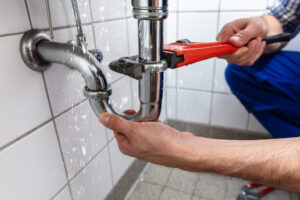The Importance of Cleanliness in American Hospitals and Healthcare Facilities: A Matter to discuss n

Cleanliness in hospitals and healthcare facilities is crucial for patient safety, infection control, and overall public health. These institutions are environments where the risk of infection is high, making stringent hygiene and sanitation practices essential. This blog delves into the importance of cleanliness in healthcare settings, the challenges faced, and the measures necessary to maintain high standards.
The Importance of Cleanliness
1. Infection Control: Hospitals are places where patients with various illnesses and infections come into contact. Maintaining cleanliness helps prevent the spread of healthcare-associated infections (HAIs), which can complicate patient recovery and lead to serious health issues.
2. Patient Safety: A clean environment is fundamental to patient safety. Proper sanitation practices reduce the risk of patients contracting additional infections during their stay.
3. Public Health: Hospitals play a critical role in the broader public health ecosystem. Ensuring these facilities are clean helps protect not only the patients and staff but also the wider community.
4. Professional Standards: Cleanliness is a key component of professional standards in healthcare. It reflects the commitment of healthcare providers to quality care and patient welfare.
Challenges in Maintaining Cleanliness
1. High Traffic and Usage: Hospitals are high-traffic areas with continuous use, making it challenging to maintain cleanliness. Patient turnover, visitor influx, and 24/7 operations contribute to this challenge.
2. Diverse Contaminants: Healthcare facilities deal with a variety of contaminants, including bodily fluids, medical waste, and pathogens. Effective cleaning protocols must address these diverse challenges.
3. Resistant Pathogens: The presence of antibiotic-resistant bacteria, such as MRSA (Methicillin-resistant Staphylococcus aureus), requires rigorous and specialized cleaning procedures to prevent their spread.
4. Limited Resources: Budget constraints and staffing shortages can impact the ability to maintain high cleanliness standards consistently.
Key Areas of Focus
1. Patient Rooms: Regular cleaning and disinfection of patient rooms are essential. High-touch surfaces such as bed rails, doorknobs, and medical equipment must be sanitized frequently.
2. Operating Theatres: Operating rooms require strict adherence to sterilization protocols. Every surface, instrument, and piece of equipment must be meticulously cleaned to prevent infections.
3. Restrooms: Hospital restrooms must be kept exceptionally clean to prevent the spread of germs. Frequent cleaning and proper waste disposal are crucial.
4. Common Areas: Waiting rooms, corridors, and cafeterias must also be kept clean to protect patients, visitors, and staff. Regular cleaning schedules should be implemented for these areas.
5. Medical Equipment: All medical equipment, from stethoscopes to surgical instruments, must be regularly sterilized and maintained to ensure they are free from contaminants.
Measures to Ensure Cleanliness
1. Training and Education: Regular training programs for cleaning staff are essential. They should be educated on the latest cleaning protocols, use of disinfectants, and safety measures.
2. Use of Technology: Advanced cleaning technologies, such as UV light disinfection and electrostatic sprayers, can enhance cleaning efficiency and effectiveness.
3. Proper Waste Management: Effective waste management systems, including the proper disposal of medical and hazardous waste, are critical to maintaining a clean environment.
4. Monitoring and Auditing: Regular monitoring and auditing of cleaning practices help ensure compliance with standards. Hospitals should have a system in place for tracking cleanliness and addressing any issues promptly.
5. Collaboration: Effective cleanliness in hospitals requires collaboration between various departments, including housekeeping, infection control, and medical staff.
Conclusion
The importance of cleanliness in American hospitals and healthcare facilities cannot be overstated. It is fundamental to patient safety, infection control, and overall public health. By addressing the challenges and implementing comprehensive cleaning measures, healthcare institutions can maintain high standards of hygiene and sanitation. This commitment to cleanliness not only protects patients and staff but also enhances the quality of care provided, fostering trust and confidence in the healthcare system.








